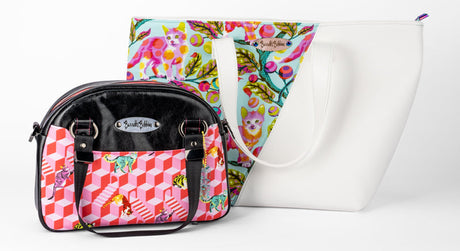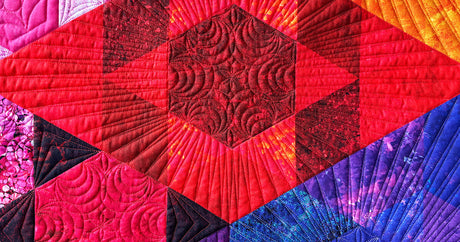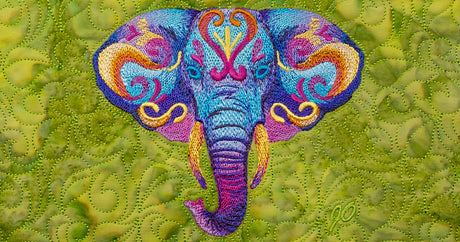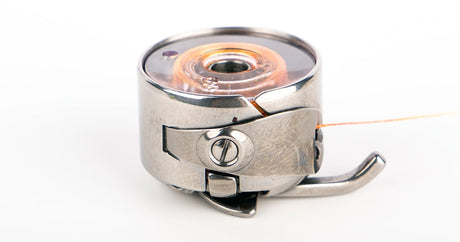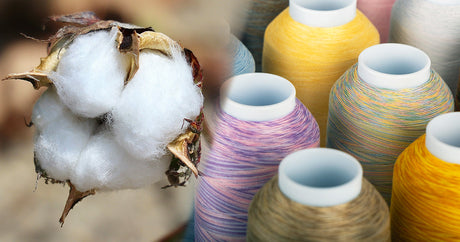Understanding What's On A Thread Label
If you’ve ever picked up a cone or spool of thread and wondered what the information on the label means, or have been confused by words like Tex,ply, or Z-twist, you’re not alone. For many quilters and sewists, understanding these details can feel more complicated than choosing a quilt pattern. But the numbers and technical terms associated with thread actually hold the key to better stitches, stronger seams, and quilts that are not only beautiful but also durable.
This educational article will clarify the language associated with threads. When you want a lint-free 60 wt. 2-ply z-twist filament polyester thread for the bobbin, or prefer to hand quilt with a glazed 40 wt. 3-ply extra-long staple cotton thread, you'll know what these terms mean and how to choose the best thread for specific applications.
From Tex and weight to composition standards, plies, and twist direction, we’ll explain what each term means, why it matters, and how it influences your quilting. No jargon. No fluff (or excess lint!). Just helpful, quilter-friendly knowledge you can use right away.
What is a Tex Number?
Not to be confused with Tax or Text, Tex is one of the simplest thread measurement systems, and its roots are deeply connected to the textile industry, having been created for uniformity across multiple industries and applications.
In practice, Tex tells you how many grams 1,000 meters of thread weighs. For example, a Tex 25 thread weighs 25 grams per kilometer. The higher the number, the thicker and heavier the thread.
Tex can be quite helpful when comparing threads made from different fiber types, such as cotton, polyester, silk, or nylon. That’s because it provides a consistent, apples-to-apples measurement across materials.
Tex is more commonly used in industrial settings and is widely employed in garment construction. There are a handful of quilting threads that are labeled and marketed using the Tex system, but it's not a go-to system of measurement for quilters or sewists. We've seen serger threads more commonly associated with measurements such as Tex 21, Tex 27, and Tex 40, among others. This again reflects its popularity with garment construction, as most serger threads are used for sewing clothing.

Woolly Nylon is a textured nylon thread made for the loopers of a serger.
Thread Weight Isn’t About Heaviness
The term weight can be somewhat misleading. You might assume a heavier-weight/higher-numbered thread is thicker, but when it comes to quilting threads, it actually means the opposite.
Thread weight (often abbreviated as wt or wt.) indicates the number of kilometers of thread needed to weigh 1 kilogram. So, a 40 wt. thread means it takes 40 kilometers of that thread to weigh one kilogram. A 50 wt. thread requires 50 kilometers to weigh 1 kilogram. That makes a 50 wt. thread thinner than a 40 wt. thread. While it certainly feels a bit counterintuitive as you start to use weight as a metric of choice for thread diameter, it's easily the most commonly used term quilters use to describe how thick or thin a thread is.
It is essential to understand that weight classifications are typically used in broad ranges. A thread that is labeled as 40 wt. might technically fall anywhere between 35 and 45 wt., depending on the manufacturer’s testing and tolerance standards, but for uniformity's sake, most thread companies stick with increments of ten, such as 30 wt., 40 wt., 50 wt., and 60 wt., being the most common quilting thread weights.
If you're piecing a quilt top and want your seams to lie flat with minimal bulk or presence, a 50 wt. thread is a great choice. When machine quilting on your home or longarm machine, a thicker 40 wt. thread is often preferred because it is more visible, allowing the topstitching to be more integral in the overall look.
Understanding the Number System (#) and Composition Standard
Perhaps the most widely used system today is the composition standard. You have probably seen threads labeled as #50/2 or #40/3, or sometimes written more formally as 50 wt. 2-ply or 40 wt. 3-ply. This is another system used to communicate thread diameter (thickness) and structure (the number of plies twisted together–more on this later).
- The first number (e.g., 50 or 40) indicates the size or weight of the thread.
- The second number (e.g., 2 or 3) tells you how many individual plies are twisted together.
A #60/2 thread is made from two plies twisted together to form a fine 60-weight thread. thread. A #50/3 thread is made from three plies twisted together to form a 50-weight thread.
Plies: The Building Blocks of Thread Strength
A ply is a single strand of fiber. Most quilting threads are either 2-ply or 3-ply, with the exception of monofilament threads, which are a single continuous strand and are not made from twisting multiple plies together. You may find two threads labeled as 50 wt. but notice that one feels thicker than the other. This is likely because you have a 50 wt. 2-ply and a 50 wt. 3-ply thread. Technically, they are both 50 wt., even though the 3-ply thread has 50% more thread (the increase from 2 to 3 is 50%).
We produce two versions of our Dream Seam 100% Egyptian-grown extra-long staple cotton threads. The 2-ply version is available in Class 15 and L-style prewound bobbins, while the 3-ply version comes in cones and spools. Although the 3-ply version contains 50% more thread than the 2-ply, its extra-tight twist reduces its overall diameter to be similar to the 2-ply, intentionally minimizing its footprint so it doesn't add bulk or presence at the seams. Quilters love piecing with Dream Seam, using the prewounds in the bobbin and spools in the top.
Having more plies in your thread doesn't always mean a stronger thread. For instance, a 2-ply high-strength trilobal polyester thread could have a higher tensile (breaking) strength than a 3-ply cotton thread.

Unwtisting a 3-ply thread to see the individual plies.

Spools of our 50 wt. Dream Seam cotton thread.
The Final Twist: The Spin That Holds It All Together
The final, or secondary, twist of a thread refers to the direction and tightness of the spin that binds the thread’s plies together. For sewing and quilting threads, there are two types of twist:
- S-Twist: The diagonal slant aligns with the center of the letter “S.” Uncommonly called "left twist," this type of finishing twist is used for loosely twisted threads, primarily in hand-stitching and handwork applications.
- Z-Twist: The slant matches the center of the letter “Z”. Uncommonly referred to as "right twist.", this type of finishing twist is used for tightly twisted threads, primarily in machine embroidery, sewing, and quilting applications.
There are also two stages of twist:
- Primary Twist: This is the first twist applied to individual fibers to create a ply. The microfilaments or staples of the fiber are twisted together to form each ply.
- Secondary Twist: After individual plies are created, they’re twisted together, often in the opposite direction of the primary twist, to form the final thread that is ready for your machine.
Most high-quality quilting threads use a primary S-twist and a secondary Z-twist. This opposite-direction process stabilizes the thread, reduces unraveling, and enhances stitch consistency by keeping positive tension along the entire length of the thread.
From Confused to Confident: Reading Thread Labels with Clarity
We hope you feel confident understanding the terminology on thread labels, such as Tex, weight, plies, and twist. With this knowledge, you’ll be able to choose the right thread for any quilting or sewing project with confidence. Every detail on a cone or spool label serves a purpose. When you match your thread to your fabric, quilting style, and desired outcome, you’re setting yourself up for success in every stitch. Choose your threads intentionally, and notice the difference in each quilt you complete.
In Summary:
- Composition, Tex, and Weight refer to how thick or heavy a thread is in relative terms.
- Sewing and quilting threads have a primary twist, usually S-twist, and a secondary twist, usually Z-twist. Most labels will not say Z-twist, and it's safe to assume that if a thread is marketed or sold for quilting or sewing on a machine, it has a final Z-twist.
- Comparing a 2-ply thread to a 3-ply thread isn't always effective, and more plies don't necessarily mean it's stronger. For best results, match fiber types, but keep in mind that some threads may have a tighter twist (remember that our 3-ply Dream Seam has a very tight twist, maintaining a similar diameter to that of our 2-ply Dream Seam thread).
About YLI's 50 wt. Perfection Quilting Thread
Perfection is a 50 wt. polyester quilting thread that delivers smooth, balanced stitching when piecing, quilting, and sewing. Its soft, gentle texture and low-lint finish help seams stay flat and your machine stays clean, so your quilts look polished and feel soft. With 64 gentle, blendable colors on longarm-friendly cones and convenient spools, Perfection is made to perform beautifully on any machine and every quilt.
Find your Perfect machine quilting thread here


